
Traditional Balinese house in Batuan Village, Sukawati District, Gianyar Regency. The house owned by Gung Aji family, foreigners call it Bali Traditional House Gung Aji. The house has a unique characteristic and it’s still preserved in ancient form whose walls still use clay. The structure of the building still uses wood and roof uses thatching grass.
To build traditional houses in Bali there special guidelines are used, namely Asta Kosala Kosali and Tri Hita Karana. The meaning of Asta Kosala Kosali is the rules of spatial layout for the safety of its residents, like feng shui in Chinese culture. Meanwhile, Tri Hita Karana is the three causes to get prosperity that comes from the harmonious relationship between humans and:
– Gods who covers the family temple.
– The natural environment which includes the yard of the house.
– Humans which includes all family members.
Many tourists both foreign and local has visited this house, there is no entrance fee ticket, but need to pay donation.
First at all, let’s look the building architecture of the house which is specially designed according to its location. This is to determine of direction, location and dimensions of the yard. It’s made in accordance with the provisions of Balinese Hindu Religion. This traditional Balinese house whose structure consists of a small building surrounded by a wall. Each part of the house has gate, WC toilet, kitchen, west pavilion, north pavilion, east pavilion, rice barn, guardian and family temple. In the construction process there are also quite sacred rules complete with ceremonial facilities. More details house compound architecture house complex as below.
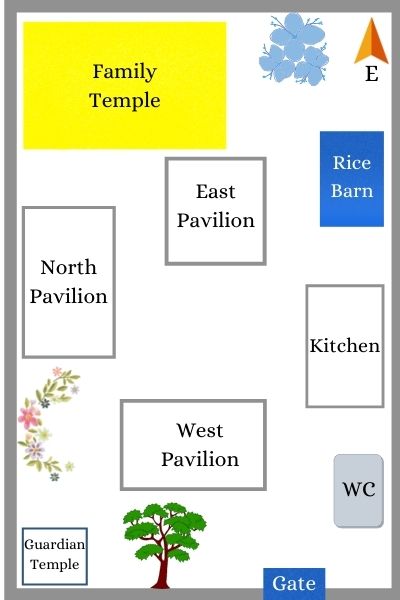
The gate is the part of a traditional Balinese house which is use for entering and leaving. It’s position is a bit south of the house yard so when someone enters the house they will pass through front of the kitchen. Balinese believed if there are people with evil intentions who bring goods that will harm the occupants will burn by Lord Brahma (God of Fire). The structure of the building is made of solid stone with a tile roof. On both sides there is a place to put offerings.
There is also a plate sign for the population census containing name of the family head and number of family members. After your pass the gate there is aling-aling which is a small wall as a screen. So the function is to make people out of the street can’t see directly the activities of family inside. The gate are also equipped with wooden doors.

The WC toilet with 2 rooms is located behind of the kitchen which is used by family to take a bath and clothes wash. The water is taken from the well beside the Jineng and also provided by the government water company.
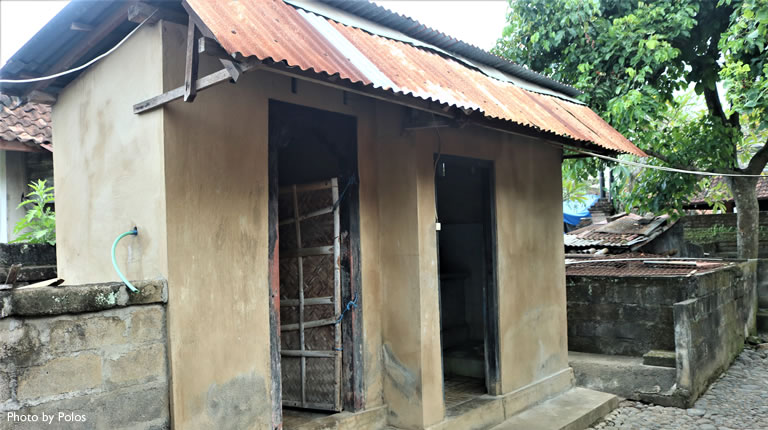
The kitchen which is located south of other buildings that always follow the direction of the sea in south. In Bali south is the position of Lord Brahma as a symbol of the God of Fire. A kitchen room built for storage and food processing whose structure is a mixture of solid stone and clay. The roof is made of thatched grass. The place for cooking is still traditional made of bricks and cooking using firewood. You are also allowed in to have a look inside as the family are very friendly.

West Pavilion with its elongated building structure is made of stone on the floor and brick walls. The poles are made of wood and the upper frame is made of bamboo with a thatch roof. There is one room that is used for a teenager’s bedroom. The front is a courtyard that is used to receive guests. The front wall is used to hang family photos and Balinese calendars.
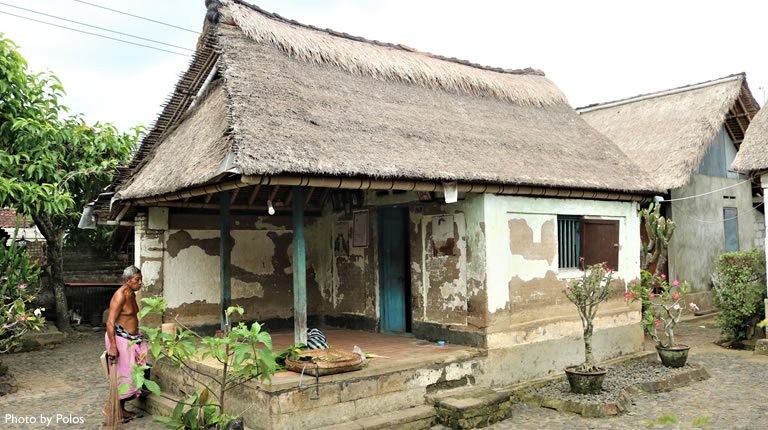
Next, let’s look at North Pavilion with its rectangular structure. The floor is made of marble and the walls are made of bricks mashed with clay. Part of the building is made of bamboo and wood with a thatched grass roof. There are four wooden supports in the front yard which are decorated with Petromax lamps. There is one room that used for bedroom of the head of the family. In front is an empty page that is used to relax family members.
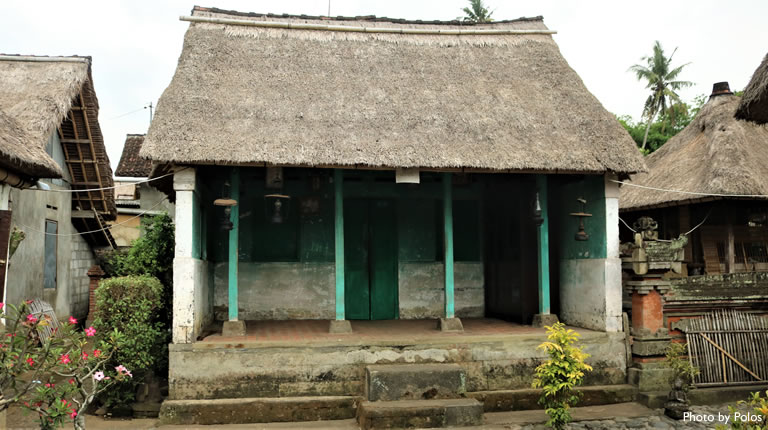
In east side, there is east pavilion with an elongated structure. The floor is made of natural stone and the walls are made of bricks. The upper supporting part of the structure is combined with wood and bamboo. The roof is made from thatching grass. There are six wooden supports or in Bali it is known as Bale Sake Enem. This pavilion bed room is used by elderly family members even though the bed is open. East pavilion serves for the preparation and celebration of ceremonies for both family and community.
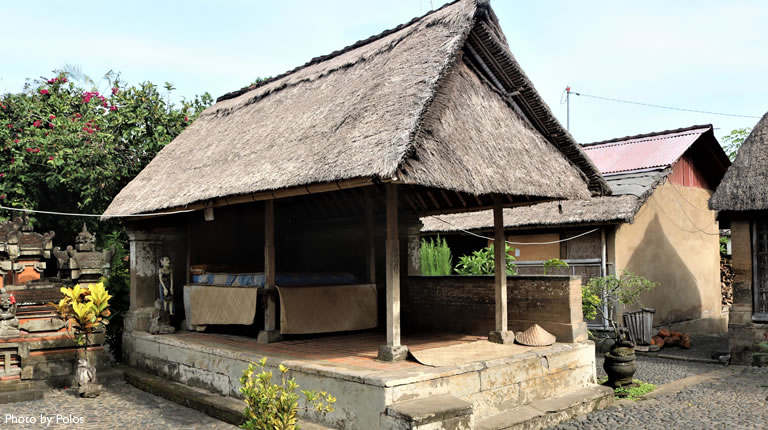
Rice Barn or granary (Jineng in Balinese) is a place to store rice after harvested. It’s located to the east of the kitchen and south of the family temple complex. The form of the building is two-story made of a combination of wood and bamboo with a thatched roof. There are four wooden supports, the upper floor is used to store dry rice and lower floor is used for making handicrafts.
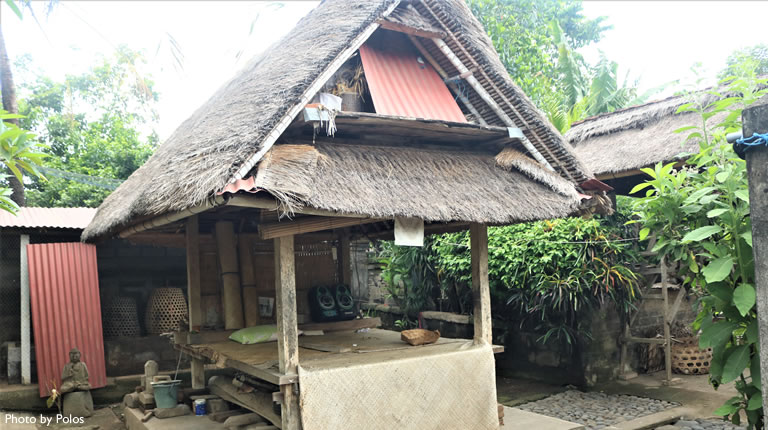
Guardian Temple is also known as Sedahan Karang which is located in the northwest of the house yard. It’s shrine has shape of small building, all made from solid stone. The function of Temple is to protect family members from invisible mystical creatures (unseen or niskala).
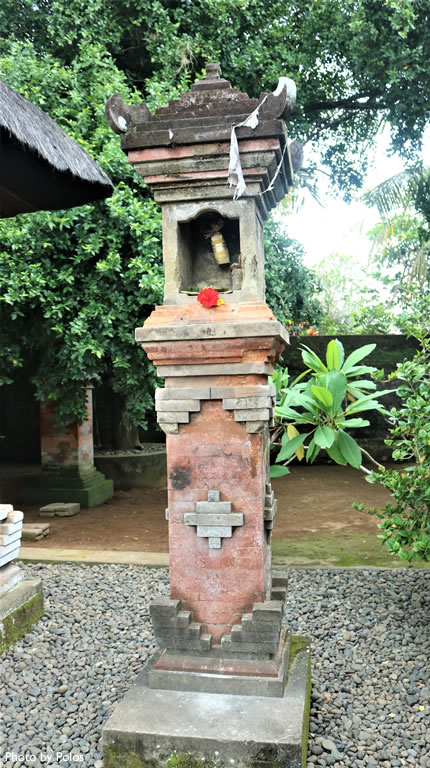
Family Temple or Merajan is complex of sacred place for family to carry out the worship ceremony. Therefore the temple built in northeast (kaje kangin), kaje in Balinese means mountain is a sacred place in Bali. The temple consists of several shrines, namely Gate, Piasan, Taksu, Padmasari, Kemulan Rong Tiga, Penglurah and Dewahyang. Ceremony at family temple will celebrate every 210 days. This is will following the Balinese calendar of 30 months. Every month there are 7 days which are famous for Uku starting from Sinta, Landep, Ukir to Watugunung

Some other interesting places to visit located near Traditional Balinese House Batuan is Gunung Lebah Temple. Campuhan Ridge Walk Ubud, Batubulan Village, Gunung Kawi Sebatu Spring Water Temple. Ubud Monkey Forest, Ubud Art Market. Ubud Palace, Saraswati Temple, Ubud Swing, Ubud Ayung River Rafting.
Tegenungan Waterfall, Tibumana Waterfall, Kintamani Batur Mount Volcano, Elephant Cave, Bali Bird Park. Tegallalang Rice Terrace, Spring Water Temple Tirta Empul, Gunung Kawi King Memorial. Bali Coffee Farm, Bali Zoo Park, Butterfly Park, Puseh Batuan Temple, Bali Salt Mining.
Celuk Silver Village, Bali Salt Mining, Mas Village, Sukawati Art Market. Serangan Island, Denpasar City. Denpasar Traditional Market, Sanur Beach, Bajra Sandhi and Bali Museum.
To visit Traditional Balinese House and these places above can reach by take Full Day Tours and Half Day Tours or combine with Adventure Tours.
Gung Aji Traditional Balinese House is located on Jalan Raya Negara No. 100, Batuan Village, Sukawati, Gianyar – Bali.
Email : info@balitobali.com
Mobile within Bali dial 081-2395-6828
Mobile overseas dial 62-81-2395-6828
Whatsapp dial 62-81-2395-6828
Please contact us by whatsapp for quick response.